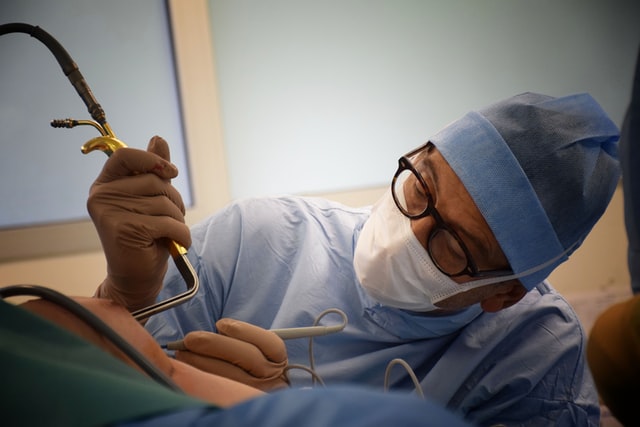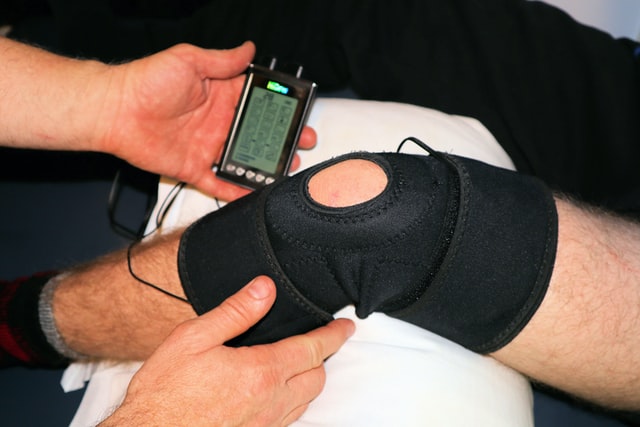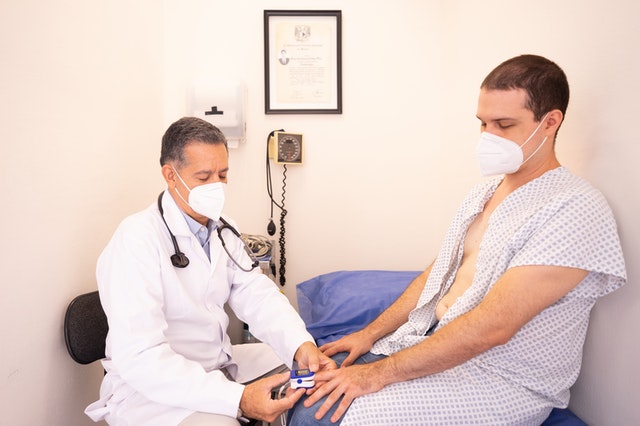
In recent years, there has been a surge in the popularity of designer knee replacement surgery. This type of surgery is unique in that it is customized specifically for each patient. While the traditional approach to knee replacement surgery is to use a single implant design that is suitable for most people, designer knee replacement surgery takes into account the patient’s unique anatomy and surgical goals.
Knee replacements have high success rates and most last many years with good function. 98% of knee replacements are successful for over 10 years. The knee replacement parts have a natural texture so that friction between the articulating parts is reduced.
As a result, this type of surgery can provide better results for some patients. If you are considering knee replacement surgery, this expert article will give you the insight to make an informed decision, when you ask your doctor if designer knee replacement surgery might be a good option for you.
Why is Knee Surgery Needed?
Just like every organ can fail like Heart failure, knees can also fail, what’s called a knee joint failure. Knee replacement surgery is a knee surgical procedure, where knee joint parts are reshaped & replaced with prosthetic components, to reduce pain from a failed joint.
This knee replacement surgery is employed for patients who have injured their knee or due to wear & tear leading to knee joint failure, which causes significant pain, disability, and limited mobility.
Severe knee injuries that can be fixed by knee replacement surgery vary from person to person. Knee replacement surgery is usually applied as a treatment of choice for those suffering from end-stage arthritic knee conditions due to osteoarthritis, rheumatoid arthritis or psoriatic arthritis & other inflammatory arthropathies.
Before knee replacement surgery is considered, it is important to ensure that the patient’ has exhausted all the non-surgical options he has in these conditions.
Knee replacement surgeries provide a long-term solution for patients with severe knee pain, that has limited them from carrying on activities they enjoy doing, such as walking or going up and downstairs, & their daily activities like shopping, and going to a place of worship, leisure & sports-related activities.
To regain full knee function after surgery one needs rehabilitation for several weeks.
How Do You Treat Arthritis of The Knee Without Surgery? What are the non-surgical treatments for knee arthritis?
The standard course of treatment when knee arthritis is being treated without surgery focuses on decreasing pain through medications like a simple analgesic ladder, limiting weight-bearing activities that cause pain, strengthening weakened muscles/joints with help of physiotherapy, losing weight if excess pounds are causing knee pain and learning how to properly move/use joints.
Failure of this can be managed with intraarticular injections of steroids/ Hyaluronic acid/Platelet-rich Plasma or Stem cells with or without local anesthesia as an office procedure.
When is the best time to do knee surgery?
This is a question many knee surgery patients ask themselves. They generally wander about this for one of two reasons:
1) they are having knee pain and want to get knee surgery as soon as possible or
2) knee problems have been causing them knee pain, but knee surgery has never been their first solution.
The correct answer is when medical management fails. Catching your injury early may help reduce the amount of damage done to your knee as big deformities don’t set in. A knee deformity can progress over time, resulting in more damage to the knee joint, bone loss, and cartilage loss.
By treating knee problems as early as possible you can cure knee arthritis and other knee deformities from getting worse: It makes surgery easy for surgeons with predictable results & surgery cheaper for you as surgeons first resort to the use of expensive augments & stems which are a must in complexly deformed knees escalating the duration & cost of surgery!
Common Types of Knee Surgery
There are many forms of knee surgery, even expert orthopedic surgeons have their own unique skill sets and techniques for different levels of joint damage. Such designer knee surgeries are an emerging trend amongst some affluent patients, who desire a more personalized assessment and a fine-tuned approach to their procedures. For this publication, I will briefly highlight the common forms used by most orthopedic institutions.
Knee Arthroscopic Surgery
Knee arthroscopy is a procedure that involves making small incisions into the knee joint where a camera is used to see inside the knee joint. The images are sent to a TV monitor allowing doctors to assess what structures (tears, rough surfaces, etc.) need repair or removal.
This procedure often takes less than an hour and many patients go home on the same day as their surgery if they had regional anesthesia; those who had IV sedation may need to stay overnight for observation. This knee surgery is also called arthroscopic knee surgery.
Knee Arthroplasty
Knee replacement and knee resurfacing are both considered knee arthroplasty. These procedures involve replacing all or part of your damaged knee joint with metal, plastic, ceramic components, and other materials.
It’s often necessary to remove all or parts of the damaged bone due to severe damage caused by arthritis, injury, or infection.
A total knee replacement (TKR) replaces the entire knee joint while a partial knee replacement (PKR) only replaces a small portion of it. This can be Medial, lateral uni, or knee cap joint replacement. Joint replacements usually last 1015 years before needing to be replaced; though some may last longer if done right and the patient takes care of their new knee and follows post-operative instructions.
A new realignment surgery called knee Osteotomy is making a comeback in the last 10 years worldwide, particularly in younger patients.
Steps in Knee Surgery, Explained.
Your knee is numb with an anesthetic in the spine and your surgeon cuts the front of your knee, moving aside muscles, ligaments, tendons, etc. that get in their way.
The kneecap (patella) is moved or pushed outside to get access to the knee, as it’s attached directly to the thigh bone by a strong tendon called the quadriceps tendon & to the leg bone by the patellar tendon, which must remain attached while joint surfaces are prepared for placing implants in them.
After the knee surfaces are prepared, knee replacement components (usually metal/ceramic) are placed in the knee joint. Either part of or all of your knee joint is resurfaced by replacing it with metal, ceramic, plastic, or metal combination components depending on the damage your knee has sustained.
Your surgeon checks that the new knee joint is working like it should be and then completes this stage by stitching up any incisions they made in your knee.
The final step is making sure you can flex (bend) and straighten (extend) your knee easily for testing purposes, before closing up any incisions in your leg made during this stage.
What Does It Feel like after Knee Surgery?
You may experience a wide range of emotions after knee surgery—from the happiness that you’ve been given to a painless future. Modern Anesthesia is so good that 99% of patients don’t experience any pain due to the nerve blocks used in surgery but yet be able to move their legs a few hours after surgery.
Your knee pain went from being something you could ignore most of the time to something requiring immediate attention from multiple healthcare professionals to manage it & treat it surgically.
Knee surgery for arthritis
Knee surgery for arthritis is an option when knee pain cannot be controlled through conservative treatment options such as medication. The knee has four compartments that are prone to knee arthritis: medial compartment, lateral compartment, patellofemoral compartment, and tibiofemoral compartment.
There are two types of surgical knee procedures for knee arthritis depending on what part of the knee needs to be replaced – unicompartmental knee arthroplasty (UKA) or total knee replacement (TKA). The biggest controversy about UKA vs TKA is whether younger patients should have a UKA instead of TKA because it would prolong the longevity of their prosthesis. Osteotomy is coming as a big alternative to UKR in young.
Unicompartmental Knee Arthroplasty (UKA)
Unicompartmental knee arthroplasty is knee surgery that replaces only one section of the knee instead of the entire knee. In a unicompartmental knee arthroplasty, only the worn-out knee cartilage and bone are surgically removed from the knee joint.
Once those parts have been removed, they are replaced by new pieces called prostheses. The goal of a unicompartmental knee replacement is to relieve arthritis pain while maintaining as much motion as possible at the knee joint.
Knee replacement surgery can range from 45 minutes to 2 hours depending on whether it’s a partial or total knee replacement. Robotics has made this UKR a very accurate procedure with close to 100% 5-year survival rates & a day procedure in advanced countries.
The amount of time needed for recovery after this type of surgery varies greatly depending on each patient but most people can expect to spend at least one night in the hospital, and knee replacement recovery time is typically 6 weeks
Total Knee Replacement (TKR)
Total knee replacement surgery (TKR) can relieve pain and restore knee function for people who have:
– severe knee arthritis & pain caused by injury or overuse
– limited knee movement with a deformity that’s not helped by other treatments
Nearly 1 million people worldwide get a total knee replacement every year. About 10% of those surgeries are on people under age 65. Many younger adults may be able to postpone the surgery until they reach their mid-60s or later as long as they continue to receive physical therapy, take arthritis medicine, make lifestyle changes, and watch for early signs of knee trouble.
Typically, knee arthritis can be treated with medicines, knee braces, injections into knee joints, and physical therapy to keep the knee joint flexible and strong. If these treatments don’t help enough to manage your knee arthritis pain, your doctor may recommend total knee replacement surgery (TKR).
Types of joint replacements used depend on many conditions such as age, activity level before surgery, etc. You should ask your surgeon what type would be best suited for you.
Pain Relief in Knee Surgery
Most knee replacement surgeries can be done with general anesthesia; knee resurfacing procedures may only require IV sedation. You will probably wake up from surgery feeling like you did something very active (because that’s what that knee feels like if you’ve been walking on it) but knee replacement surgery itself is usually not painful.
Some knee pain following knee arthroplasty is normal, expected, and temporary; this pain decreases over time as your knee continues to heal.
The amount of postoperative pain you feel after knee surgery depends on the severity of your injury before surgery and how well you adhere to doctor instructions for caring for your new knee after leaving the hospital.
What is the Best Knee Replacement Brand?
This is an impossible question to answer because different medical professionals prefer different brands. The mako implant and stryker implant are the most common replacements among the three leading brands.
There are many reasons why people choose one brand over another, but there isn’t a single best knee replacement brand.
While mako implants and stryker implants are generally able to perform the necessary functions better than oxford implants, they are also more expensive. Some patients can not afford mako or stryker implants so their only choice is an oxford implant. The mako or stryker implant will last longer when compared with an oxford implant but it doesn’t mean that it’s the best knee replacement brand for everyone.
Some mako implants and stryker implants are said to last longer than others. As with any product, make or stryker implants can become defective so they need to be replaced.
Getting the same brand helps to ensure that the replacement knee will function properly. Patients who have gotten mako or stryker replacements may want to replace them with mako or stryker replacements again because they trust those brands more.
Oxford implants are the best knee replacement brands for people who cannot afford mako or stryker replacements because mako and stryker implants are more expensive. Oxford replacements provide a good source of quality knees for people who need their first set of knees repaired, but don’t want to spend too much money. If they are satisfied with their oxford implants they will not want to change brands once they have mended.
Since the early 2000s, Zimmer has been the clear market leader, but there are some competitors on the horizon looking to give Zimmer a run for its money.
Although Zimmer dominates the knee replacement industry with about 90% of all implants sold, there is still room for improvement when it comes to patient care and Zimmer is using new technology to bring knee replacement surgery to the next level for both doctors and patients alike.
Zimmer has dominated the knee implant market since its release in 2003. Before Zimmer was introduced, surgeon outcomes were inconsistent and not very good. Surgery was difficult with high risks of infection and discomfort after surgery. zimmer’s goal was to create a standard for knee implants, and after their release, they received very positive feedback from patients. Zimmer has achieved an estimated market share of 90%.
Which Knee Surgery has the Lowest Risk for Blood Clots?
There are many different types of knee surgery and each one has its own blood clot risk. The blood clot rate varies depending on the type of knee surgery, your history of blood clots, and your current health before surgery. Blood clots can happen to anyone and at any time, but some people have a higher risk based on their personal history and other factors.
Blood clots may be more likely in people who have pre-existing cardiovascular disease or conditions that increase blood coagulation ability or interfere with blood flow within veins and arteries. Other factors include age over 60 years old, obesity, smoking history, pregnancy, and use of estrogen therapy in postmenopausal women.
The lowest blood clot risk is observed after lateral release, which involves cutting the ligament that runs along the side of the knee joint. This procedure has about a 2/3 blood clot chance in comparison to total knee replacement (TKR).
According to a new study published in the February issue of the Journal of Bone and Joint Surgery blood clots following knee surgery are very common. The more blood clots that follow knee surgery, the greater the risk for blood clots later on.
Researchers found that 22% of people who had knee replacement had blood clots following their operation and three percent were diagnosed with deep vein thrombosis (DVT).
15% of those who underwent meniscectomy procedures also had blood clots after their operation.
Out of all surgeries studied, total knee replacements have the lowest risk for blood clot formation after surgery compared to other types of surgeries done on knees including meniscus repair or trimming partial replacement, or arthroscopic surgery.
Which knee surgery is the most painful?
The pain of knee surgery typically starts immediately after the surgery and falls into three stages. The knee pain associated with knee reconstruction surgeries ranges from bad pain to ugly knee pain depending on the type of knee injury you have and whether or not you had other knee surgeries before this one.
Good Pain
The first stage they call “good pain”. “Good pain” is like when you tear a muscle while exercising and it hurts bad but then a few days later your knee feels better than before you hurt it. Most people compare “good pain” to a very deep paper cut that stings bad but then goes away in about an hour or so.
Bad Pain
The second stage is “bad pain.” Stage two knee pain isn’t as intense as stage one knee pain but it lasts longer. It also hurts when your knee moves and gets worse at night. Your knee might ache in the “bad pain” stage and you may not be able to go up or downstairs very well.
Ugly Knee Pain
Stage three knee pain is called “ugly knee pain.” The knee pain in stage three feels like razors are being rubbed against your knee cap. You will feel this all day every day, even when you are resting.
Knee replacement pain is usually short-lived after surgery because the knee cap gets replaced with a plastic/metal implant. Stage one knee pain can last for several weeks or months depending on your unique situation but stage two and three knee pain should subside within four to six weeks of the surgery.
Knee reconstruction surgeries tend to be more painful than knee replacement surgeries even though you don’t replace any parts of your knee during reconstruction surgeries.
People who have had reconstructions tend to feel more fatigued than other people who have had knee procedures. Additionally, you will likely need crutches if you have reconstruction knee surgery.
What are the Costs of Knee Surgery
Knee replacement surgeries are often very expensive because they are not only one of the most common knee surgeries but also because two pieces have to be made specifically for each person – a tibia piece and a femur piece. Although prices can vary quite drastically it is important to keep in mind that knee replacement surgeries last up to 20 years so it is worth saving up for if you need knee surgery right away.
If you do not require knee surgery but instead would like to budget ahead of time, it is important to be mindful of knee replacement costs when looking at knee surgeries. These knee surgeries will not only help you to determine what knee surgery cost you might need in the future but also how much your knee surgery could potentially cost if you do knee replacement later on down the line. There are quite a few knee surgeries that can be done depending on the location, severity, and cause of your knee injury or problem.
Some examples include:
– Arthroscopic Surgery – $5,000-$7,500
– Microfracture Surgery – $6,400-$8,500
– OATS (Osteochondral Autograft Transfer System) – $11,700-$14,000
If you have knee pain, a knee injury, or knee surgery costs that you need to plan for, it is important to do your research and get a knee surgeon’s opinion. Within the United States, knee surgery costs can vary quite drastically depending on where you live and what type of knee surgery you may need. This is because certain states have more qualified surgeons with lower knee surgery costs whereas others don’t have as many surgeons available.
The average knee surgeon cost in the United States for knee surgery is $13000, which can vary widely depending upon where knee reconstructive surgery is performed. For example, an anterior cruciate ligament (ACL) knee reconstruction cost can range from $6000 – $16000 at some hospitals. Knee replacement surgery costs average anywhere from $6500 – $17000, while posterior cruciate ligament (PCL) knee reconstructions typically have a higher knee surgeon fee of about $8000-$25000+, depending on your location of choice.
Insurance knee procedure costs are typically determined by your health insurance policy. The average knee surgeon cost of knee surgery is usually based on the knee surgeon fee, hospital fee, rehabilitation facility cost, and related knee surgery fees for knee replacement or knee reconstruction surgeries.
You can check with your insurance provider for any coverage that may be available, but you know your policy best. For example, some insurance providers cover the entire knee surgery expenses if you elect to receive treatment at an in-network provider (your knee surgeon must be part of the network). Some other types of insurance plans will only cover a percentage of certain joint replacement costs.
You may want to negotiate out-of-pocket knee surgery cost without insurance too; however, this knee surgeon cost may vary!
Luckily, knee surgery costs are not usually very large in most cases. This knee surgeon fee is typically covered by the hospital, which means that you do not have to worry about knee reconstructive surgery expenses either. You can also ask your knee surgeon or insurance company for payment plan options if knee surgery is simply out of your financial reach. If you need knee replacement financing, various medical financing plans are available too.
If you are considering knee replacement surgery, then this knee surgeon will be able to provide more information on all associated knee reconstruction costs for both knee replacement and knee reconstruction surgeries. A health care professional can help determine what type of procedure they recommend for you based upon the extent of your injury and other factors.
Knee replacement surgery knee surgeon costs are often covered by insurance companies.
Anterior knee pain knee cost is typically not very high, but it will depend on where you have knee surgery performed and who performs your knee surgery. Usually, an orthopedic knee surgeon, sports medicine knee specialist, or general orthopedist performs knee surgeries, either as an outpatient or inpatient procedure at a local hospital. This will depend on if they see your knee condition as emergent or non-emergent.
If you have had an ACL reconstruction with a hamstrings tissue graft then the anterior knee pain cost will be higher than just simply replacing the ligament altogether. If you plan to receive treatment from outside of your home country, make sure that your travel knee health insurance covers you for knee surgery abroad.
ACL knee reconstruction knee surgeon costs are based upon many factors, including your particular knee condition and the hospital where knee replacement is performed. Anterior knee pain knee cost can be expensive, which is why it is important to check with your healthcare insurance provider before receiving a knee replacement surgery. However, if you have a good medical knee health plan then coverage should include most of the knee surgeon fee for this type of medical treatment.
If you need more information on how much does a knee replacement costs or ACL knee reconstruction costs, contact a doctor that specializes in joint replacements. A sports medicine doctor will typically only perform ACL grafts, while an orthopedic general practitioner has extensive training in ligament knee injury knee care.
A knee surgeon cost is typically required for this knee surgery, but the average knee surgeon fee can vary depending on if you need anterior knee pain knee replacement or knee reconstruction. Knee surgeons perform many types of knee surgeries, so contact a doctor that specializes in ligament injuries to get more information.
If you are considering knee replacement surgery, then this knee surgeon will be able to provide more information on all associated knee reconstruction costs for both knee replacement and knee reconstruction surgeries. A health care professional can help determine what type of procedure they recommend for you based upon the extent of your injury and other factors.
After Knee Surgery Care
Since knee surgery requires postoperative care, here are some tips you can follow to ensure proper recovery:
– The knee should be elevated while sleeping to reduce pain and swelling
– If you have knee bandages or stitches, make sure to keep them dry while showering to prevent infections
– Avoid applying ice directly on the skin as it may cause frostbites, but instead use cold packs wrapped in fabric or a paper towel
– Do not cross your knee when you sit down, especially if you have knee bandages.
– Do not bend the knee too much and avoid sitting in one position for long periods since this can cause blood clots and knee stiffness.
– If you needed to use crutches during recovery, make sure to keep moving around and walk as much as possible to prevent knee stiffness
– When returning home from the hospital, place a step stool near the bed or chair so that when seated, both feet can touch the floor. This will help reduce knee pain and swelling when getting up from a seated position.
Can’t Sleep Because of Knee Surgery Pain?
Knee surgery can take a toll on your knee. You may experience knee pain when sleeping, causing sleeplessness.
Here are some suggestions that can help you sleep without knee pain:
1) A knee sleeve or knee brace that is worn before bedtime will provide warmth and support to the knee joint helping to reduce any stiffness in the knee. This will make it easier for you to get comfortable in different positions so you can fall asleep at night. It also helps hold your knee in place while sleeping so it doesn’t slip out of place throughout the night which would cause pain when waking up in the morning.
2) Elevating your legs above the knee while sleeping takes the pressure off of your knee, allowing you to get comfortable enough to fall asleep. For knee surgery patients, this can be done with a few pillows under the knee and legs when in bed so they are at or above knee level.
3) You may also consider using ice packs on your knee before bedtime to reduce pain and swelling in the knee joint. Placing an ice pack over a knee brace will hold it securely in place while you sleep and keep the cold right over where you need it most: your knee. This is especially helpful for knee arthritis patients who can experience increased pain just below their knee cap.
4) Pain medications such as Tylenol (acetaminophen), Celebrex (celecoxib), and aspirin can help knee pain while sleeping. Consult your prescribing physician to ensure that these medications are safe for you and the dose is correct.
5) Warm baths or showers before bedtime can reduce knee pain and stiffness that may keep you up at night. Just make sure not to get your knee cold while taking a bath or shower; instead, try hot water on your knee for five minutes followed by cold water on the knee for two minutes, repeating this twice more until finished with your knee bath.
6) Knee braces specifically made for sleep comfort are available if other options do not provide relief from knee pain when sleeping at night. They are lightweight so they won’t cause knee pain when lying on your knee and are made of stretchable materials for knee comfort.
7) If knee pain is keeping you awake at night, ask your doctor about pain medications for knee pain relief. Knee injections for pain relief are helpful for knee arthritis patients who are experiencing significant knee pain that can affect sleep quality.
Post-Operative Knee Surgery Rehabilitation & Exercises
In the past, surgeons avoided knee replacement for younger people with knee problems unless other medical conditions mean the knee will not work well enough without a knee replacement. Because knee replacements have become more effective in recent years, knee surgeries are now being performed at an earlier age, often on much younger patients.
Tearing or injuring ligaments can result in some instability of the joint and limited movement of the knee joint and surrounding muscles. If you have had this type of knee injury, your doctor may advise doing some strengthening exercises after surgery to help support the joint and speed up recovery.
It’s also important to do gentle exercises that stretch and move your knee joint to help prevent stiffness.
When you have knee surgery, your knee will be wrapped in a splint or brace that keeps your knee straight. You should avoid moving your knee for several weeks after the surgery while it is healing. This means that you should not bend or straighten your knee during this time. Doing so may delay recovery and increase pain, especially when the knee is being bent beyond 90 degrees.
However, if you often feel the urge to stretch the knee joint (beyond 180°), it can reduce the discomfort felt near the joint and help with circulation within the joint itself. If you are unsure whether or not your knee surgeon approves of any type of stretching exercises before 6-weeks post-op; always check with your knee surgeon.
While knee surgery will help repair the damage done by the injured structure(s), it’s important to continue strengthening exercises after knee surgery as well as stretching exercises.
After knee surgery, you must be proactive about post-surgery joint care to maximize results that directly correspond with physical activities after knee surgery. Remember that everyone’s body heals differently; thus, it’s important not to compare your progress following Physical rehabilitation with other people who have had similar knee surgeries.
Knee replacement remains a viable surgical procedure today, but it’s important to remember that knee surgery can effectively eliminate knee pain without involving knee replacement as well! If you are currently recovering from knee surgery or planning on undergoing knee surgery soon, follow your doctor’s recommended rehabilitation protocols and always check with your doctor before starting any type of exercise program after knee surgery.
While everyone heals differently, following rehabilitation protocols as closely as possible can help speed up recovery as well as prevent future knee injuries, so don’t forget to communicate with your doctor if you plan on starting an exercise program and/or physical activity after knee surgery. Your knee surgeon can help ensure that you are doing knee exercises correctly and it’s important to remember that everyone heals differently.
What is Your Best Option for Affordable High-Quality Knee Surgery? Ask our Doctor, Today!
Knee injuries affect millions of people each year and can be very painful. When knee pain becomes unbearable, many people choose to have knee surgery to return their knee to normal functionality. However, knee surgeries can range in price from $5,000-30,000 depending on the type of surgery needed – making it hard for most people to afford knee surgery.
Fortunately, there are ways to reduce the cost of knee surgeries without compromising quality! Dr. Srikanth KN’s own boutique orthopedic surgery center offers high-quality knee surgery at the most affordable rates for his concierge patients. His unique expertise in designer knee surgery options includes knee replacement, knee arthroscopy, knee ligament reconstruction, and many other robotic knee surgery procedures.
The VIOS Clinic is your gold-standard solution to get the best medical and surgical options that fit your needs. Visit us online today to schedule your consultation with Orthopedic Surgeon Dr. Srikanth KN to learn more about how he can help you find an affordable knee surgery option.

BLOG AUTHOR
Dr. Ismail Sayeed
Dr. Sayeed is the Medical Director of ViOS, Inc. He is a deeply committed physician entrepreneur & medical blog writer. While building the global infrastructure of the VIOS Clinic, he is dedicated to educate people on the potential of specialist telemedicine for managing chronic diseases.
Read more about him in his author bio








0 Comments